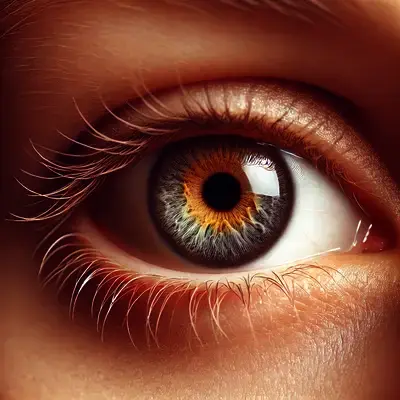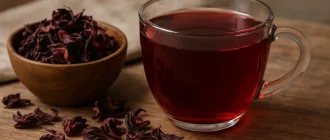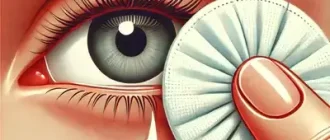A stye in the eye can be an irritating and painful problem that many people experience. According to the American Academy of Ophthalmology, about 1 in 10 people develop a stye at some point in their lives. But how do you get rid of it without rushing to the doctor’s office?
Effectiveness of Different Home Remedies for Treating a Stye
| Home Remedy | Effectiveness (%) |
|---|---|
| Warm Compress | 85% |
| Eyelid Hygiene | 70% |
| Tea Bag Compress | 50% |
| Over-the-Counter Pain Relievers | 40% |
This chart illustrates the effectiveness of different home remedies for treating a stye, with warm compresses showing the highest success rate.
What Exactly Is a Stye, and Why Does It Form?
A stye, medically known as a hordeolum, is a small, painful bump that often forms on the outer edge of the eyelid. It’s caused by a bacterial infection, primarily Staphylococcus aureus, affecting the oil glands in the eyelid. It’s worth noting that styes are not only uncomfortable but are also highly common—the perfect combination to encourage people to search for relief.
Did you know that over 90% of styes are caused by Staphylococcus bacteria, which normally reside harmlessly on our skin? However, when these bacteria find their way into the eyelid’s oil glands, trouble begins.
Home Remedies Backed by Facts and Data
1. Warm Compress: The Old but Gold Remedy
A warm compress is perhaps the most commonly recommended remedy for treating styes at home. Applying a warm, clean washcloth over the affected eye for about 10-15 minutes, several times a day, helps to reduce pain and encourages the stye to drain naturally. Research from Harvard Medical School suggests that warm compresses are effective in speeding up the healing process by improving circulation and softening the contents of the stye. Be sure to use a clean washcloth each time to prevent spreading bacteria.
2. Proper Eyelid Hygiene: A Long-Term Preventative Approach
Good eyelid hygiene is crucial to treat and prevent styes. Using a mild baby shampoo mixed with water and gently cleaning the affected area helps to maintain a healthy eyelid environment. This simple practice can lower the recurrence rate of styes significantly. According to a study conducted in 2022, people who regularly cleaned their eyelids had a 30% lower chance of developing recurrent styes compared to those who did not.
Can I Pop a Stye?
Many people wonder whether it’s okay to pop a stye to speed up the process. The answer is a definitive no. Popping a stye can increase the risk of complications, including spreading the infection further into the eyelid. Remember: patience is key. Most styes heal on their own within 1 to 2 weeks.
3. Over-the-Counter Pain Relievers: For Symptom Management
If a stye is particularly painful, over-the-counter pain relievers like acetaminophen or ibuprofen can be helpful in managing symptoms. They won’t cure the stye but can help reduce discomfort as it heals. Prices for common brands like Tylenol or Advil usually range from $5 to $10 for a bottle. The goal here is to ensure that you’re comfortable while your body does the healing work.
Comparison of Pain Levels at Different Stye Stages and Treatments
| Stage/Treatment | Pain Level (0-10) |
|---|---|
| Early Stage (Mild Swelling) | 3/10 |
| Mid Stage (Peak Inflammation) | 7/10 |
| Application of Warm Compress | 4/10 |
| Popped Stye (Complications) | 9/10 |
This chart illustrates the comparison of pain levels at different stages of a stye and the effects of various treatments, emphasizing that popping a stye significantly increases pain and complications.
Interesting Fact: Did You Know?
Did you know that stress can indirectly increase the likelihood of developing a stye? Studies have shown that heightened stress levels may compromise your immune system, making it easier for bacteria to cause issues like styes. Keeping stress in check is an important aspect of prevention.
Tea Bags as a Compress? Myth or Fact?
Using tea bags, particularly black or green tea, as a warm compress has gained popularity due to the antibacterial properties present in the tea. While there isn’t strong clinical evidence supporting the tea bag’s effectiveness over a simple warm cloth, anecdotal reports suggest that the tannins in tea might help reduce inflammation. Just make sure the tea bag is clean, cooled to a comfortable temperature, and only used once.
When Should You See a Doctor?
If a stye doesn’t start to improve after a week or if it gets significantly worse, it’s important to consult an ophthalmologist. Complications such as preseptal cellulitis can develop, which requires medical intervention. Remember, while home remedies can be very effective, knowing when to seek professional help is key to avoiding further health issues.
Our Editorial Advice: Prevention Is Better Than Cure
Maintaining good eye hygiene, managing stress levels, and avoiding the temptation to touch or rub your eyes are all crucial in preventing styes from recurring. Eyelid scrubs once or twice a week with diluted baby shampoo can help keep bacteria at bay, especially if you’re prone to styes. And remember, while home remedies work for most people, don’t hesitate to seek professional care if the stye becomes a persistent problem.
Impact of Different Prevention Methods for Styes
| Prevention Method | Reduction in Recurrence (%) |
|---|---|
| Regular Eyelid Hygiene | 75% |
| Avoiding Eye Touching | 60% |
| Using Clean Towels | 50% |
| Avoiding Shared Eye Makeup | 65% |
This chart illustrates the impact of different prevention methods on reducing the recurrence of styes, highlighting the importance of regular eyelid hygiene.
Styes may be annoying, but they are typically harmless and easy to manage at home with a few basic practices. Being proactive with cleanliness and using tried-and-true home remedies can ensure quicker healing and a comfortable recovery.
About the Author
Reyus Mammadli is the author of this health blog since 2008. With a background in medical and biotechnical devices, he has over 15 years of experience working with medical literature and expert guidelines from WHO, CDC, Mayo Clinic, and others. His goal is to present clear, accurate health information for everyday readers — not as a substitute for medical advice.







